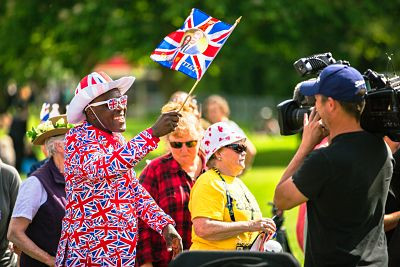What’s the British Communication Style?
If you want to communicate productively with British colleagues and customers, then it’s important to understand the UK communication style.
This will help you to make a good impression and deliver your message in a way that gets the outcomes you need.
Below, we’ve outlined some important features of the British communication style.
When reading about these features, take the time to reflect upon how they compare to your own communication style and what challenges they might present.
Remember we are only making generalisations about the British – not all British people communicate in exactly the same way, and you will find many differences from North to South, East to West.
So be careful not to treat every single Brit the same.
However, these pointers will definitely help give some great initial insights into the communication style.
DON'T MISS THE FREE SAMPLE OF OUR
ELEARNING COURSE ON BRITISH CULTURE
AT THE END OF THE PAGE!
4 Important Aspects of the British Communication Style
1. British people use a mix of direct and indirect communication
In very basic terms, communication cultures across the world can be classed as direct or indirect.
In direct communication cultures, people tend to say what they think. By doing so, they emphasise transparency rather than relationships and feelings.
The U.S communication culture is one of the most extreme examples of direct communication.
On the other hand, indirect communication cultures place more emphasis on feelings and relationships which means people tend to not say what they think if it could make someone feel bad.
The British communication culture can be confusing for many foreigners as it is a mix of both direct and indirect.
This means that British people can be both direct and vague depending on context.
It’s fair to say that they tend to be direct when communicating information that is not likely to offend and indirect when they are communicating something that might upset someone.
2. British people ‘beat around the bush’ when communicating
Although the British are happy to communicate facts and general statements directly, they are far more reserved when it comes to communicating feedback and opinions.
As such, they tend to ‘beat around the bush’, meaning that they speak carefully without getting to the point directly.
If, for example, you ask a British person to give you feedback on a report you’ve written and there are elements of the report that they don’t like, then rather than tell you this, they may instead dress their feedback up in positives.
They might say, for example, ‘I really like Section A, but I wondered if you might make Section B a bit stronger by doing XXX’.
In this way, they avoid causing upset or offense.
If you work with British colleagues, then you need to be aware of this tendency and not to always take what they say at face value.

There are some aspects of the British communication style that can drive foreigners crazy, or as the Brits would say, "bonkers".
Click here to discover what they are!
Photo by Andrea Piacquadio from Pexels
3. British people value politeness in communication
British culture places a lot of value on manners both generally and when making requests, which in turn influences the communication culture.
For example, if they ask someone to open a window, they might say, ‘Sorry but I wondered if you would mind opening the window for me?’
They are also likely to show good manners in more general communication by using an abundance of phrases, such as, ‘please’, ‘thank you’, ‘would you mind..’, ‘it would be great if you could…’
Something that irks the British is greatly is when someone ‘forgets their manners’.
Even foreigners are at risk of being perceived as rude and uncouth if they forget to say please or thank you!
4. British people are self-deprecating in communication
You may well find that your British colleagues or customers are self-deprecating when speaking with one another.
They might, for example, make a joke about their own appearance or financial situation.
They tend to do this in an effort to break down barriers, reduce tension, build trust or to build equality in status with the person they are talking to.
This tendency also translates into something known as ‘banter’ or ‘bants’, whereby people who know each other well might make tease each other.
For example, they might say to a colleague, ‘Nice outfit, did you get dressed in the dark?’ This tendency isn’t intended to cause offence. Instead, it demonstrates sufficient trust in the relationship to be able to do so.
Learn More! Take a Course on British Culture
If you’d like to explore the British communication style in more detail, then buy our British Cultural Awareness online course!
This course is jam-packed with essential directions about the business culture in the UK to help you to make the best impression possible.
Here’s a peek inside! See below to take a sample.
Main Photo by King's Church International on Unsplash
Related Posts
By accepting you will be accessing a service provided by a third-party external to https://www.commisceo-global.com/

 +44 0330 027 0207 or +1 (818) 532-6908
+44 0330 027 0207 or +1 (818) 532-6908

